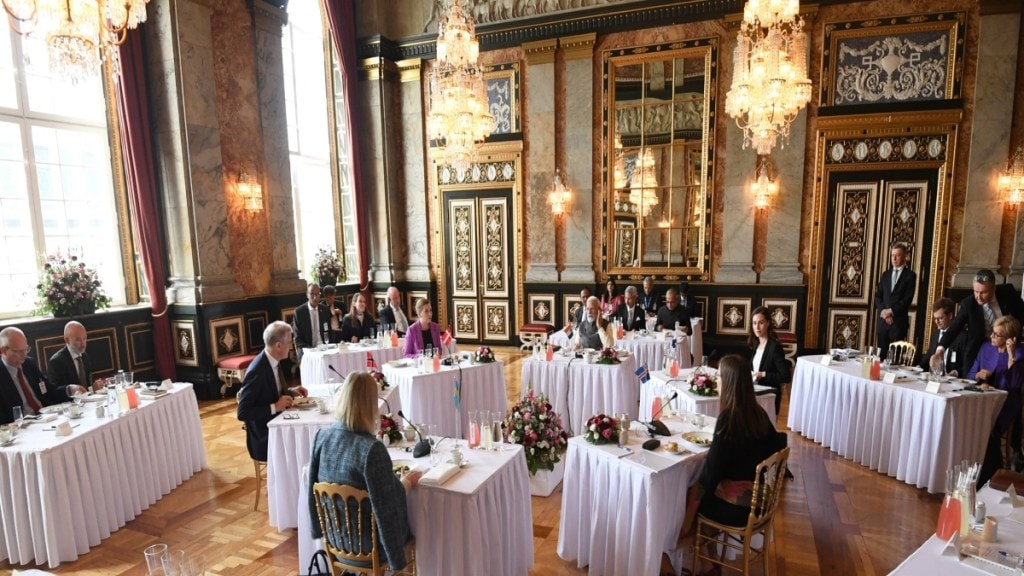By Dr. Sakti Prasad Srichandan & Ms Pooja Mohanty
Two years ago, the leaders of India and the five Nordic countries emphasized the Arctic as a key area for cooperation in the Joint Statement issued following the 2nd India-Nordic Summit. This emphasis was reinforced by the growing warmth in India-Nordic relations, marked by deepening strategic alignment and expanded outreach. This development is set against the backdrop of both the physical and geopolitical warming of the region, which has elevated the importance of the High North in global decision-making forums.
Why the Arctic Rush?
The thawing of the Arctic has raised numerous environmental and ethical concerns, including coastal soil erosion, shifts in biodiversity, habitat loss, food insecurity, the release of previously trapped microbes, and risks to livelihoods. However, the question remains whether these concerns are significant enough to overshadow the region’s economic and strategic opportunities. There is a strong desire to exploit the potential resources and sea routes opening up in the Arctic. According to a 2008 US Geological Survey, the circumpolar North is estimated to hold around 90 billion barrels of oil, 1,669 trillion cubic feet of natural gas, and 44 billion barrels of natural gas liquids that are yet to be discovered. Climate change and advancements in maritime technology are making two key transit routes, the Northern Sea Route (connecting Europe and Asia) and the Northwest Passage (connecting Europe and North America), increasingly accessible. Consequently, non-Arctic states like China claiming itself as ‘Near Arctic State’ have joined traditional Arctic actors in seeking to benefit from the region’s new energy and mineral resources, as well as the potential for reduced transit distances, times, and costs, and strategic alternatives to existing chokepoints. Nevertheless, the primary interest in the Arctic remains scientific, centered around research efforts.
India in the Arctic
India’s interest in the Arctic is primarily focused on research, aiming to contribute to the understanding of the High North, its connection to the “third pole” Himalayas, and the Indian monsoon. India sees this as a mutually beneficial process, where it can share its knowledge and expertise to enhance regional understanding, policy-making, and best practices. India’s involvement in the Arctic dates back to the 1920s with the signing of the Svalbard Treaty, in which colonial India, represented by the Earl of Derby, participated. Following independence, India’s Arctic engagement has deepened. India adheres to the UN Convention on the Law of the Sea (1982) as the governance framework for the High Seas of the Arctic. India’s Arctic initiatives have largely involved scientists and researchers. It conducted its first Arctic expedition in 2007 and established the Himadri research base in Svalbard in 2008, along with the installation of the multi-sensor moored observatory ‘IndArc’ in Kongsfjorden in 2014. India’s first winter scientific expedition to the Arctic was launched last year. At the national level, the Indian government has designated the National Centre for Polar and Ocean Research (NCPOR) as the lead agency for polar research, reflecting a cross-sectoral, inter-ministerial, and stakeholder-inclusive approach.
India’s Arctic engagement has seen two significant milestones: Firstly, India became an Observer State in the Arctic Council, the region’s primary intergovernmental forum in 2013. It is argued that a non-Arctic state like India’s inclusion in the Arctic Council as an Observer State will have a moderating influence on China’s activities and Russia’s assertion. Secondly, the release of the ‘India’s Arctic Policy: Building a Partnership for Sustainable Development’ document in 2022. India’s policy paper, though lacking geopolitical teeth, has tried to articulate its interests and strategy.
India-Nordic cooperation in the Arctic
The drive for collaboration in the High North is a product of the evolving ties between India and the Nordic countries. India’s Arctic Policy provides a good framework for expansion of India-Nordic cooperation in the Arctic region. A shared objective of addressing climate change unites them. Scientific collaboration, including joint research projects and training programmes, remains the cornerstone of India-Nordic relations in the Arctic. Sustainable Arctic tourism, digital connectivity, and environment friendly, free and open shipping routes have emerged as potential areas of cooperation.
India’s engagement in the Arctic began with a focus on cooperation rather than power rivalry considerations, with a shared commitment to multilateral institutions. However, issues such as the northward expansion of NATO (with Finland and Sweden’s accession), region’s militarization, the Nordic countries’ dilemma for a revival of ‘Arctic Exceptionalism’, gaps in Arctic governance mechanisms, and the influence of China pose significant challenges for India and the Nordic countries. Despite the Nordic countries’ eagerness to engage with India, the Arctic region has been slow to capture India’s strategic attention.
About the Authors:
Dr. Sakti Prasad Srichandan is Assistant Professor, Centre for European Studies, School of International Studies, Jawaharlal Nehru University.
Ms Pooja Mohanty is pursuing Master’s Degree in International Relations and Area Studies, School of International Studies, Jawaharlal Nehru University.
Disclaimer: Views expressed are personal and do not reflect the official position or policy of Financial Express Online. Reproducing this content without permission is prohibited.

